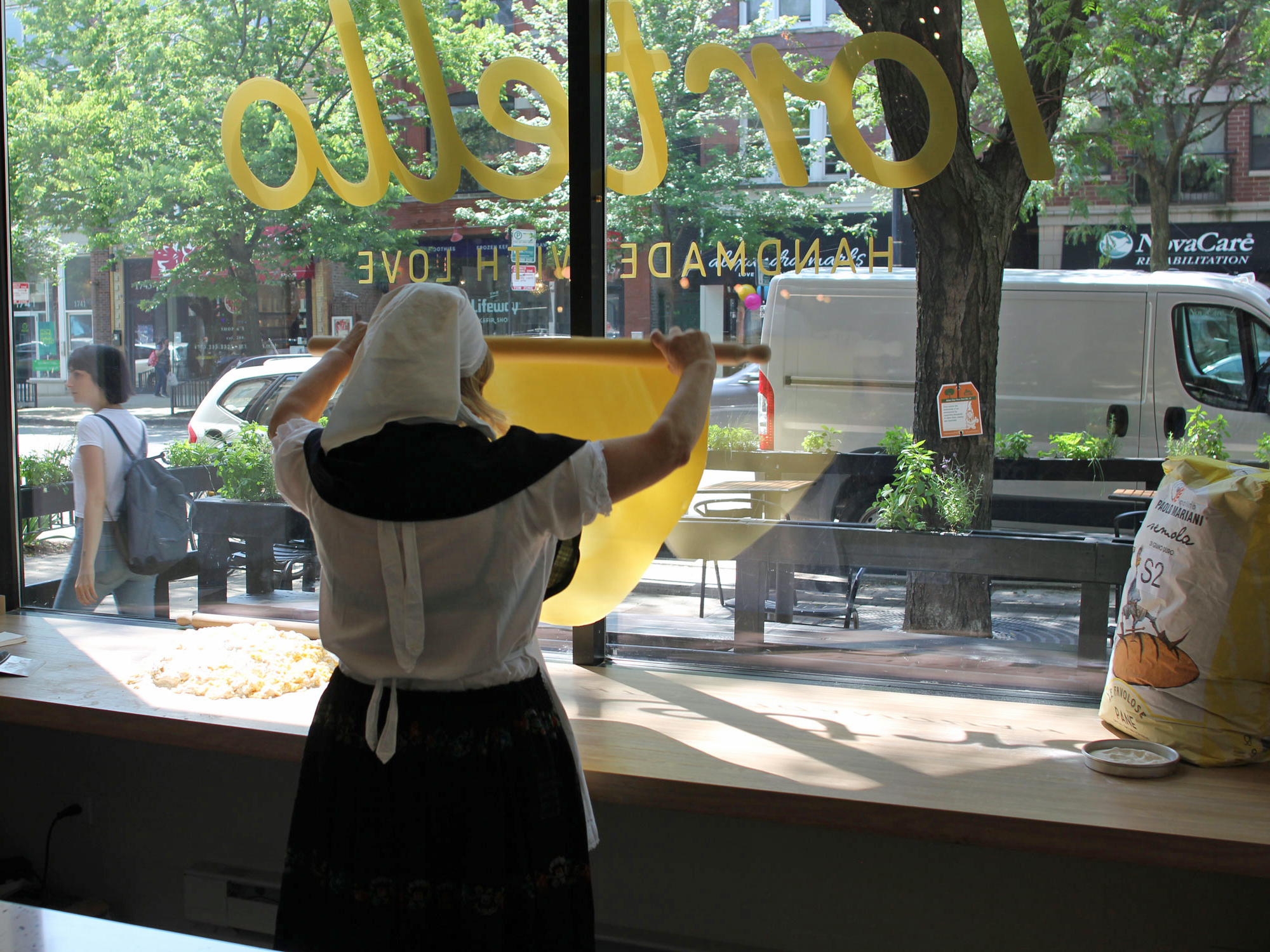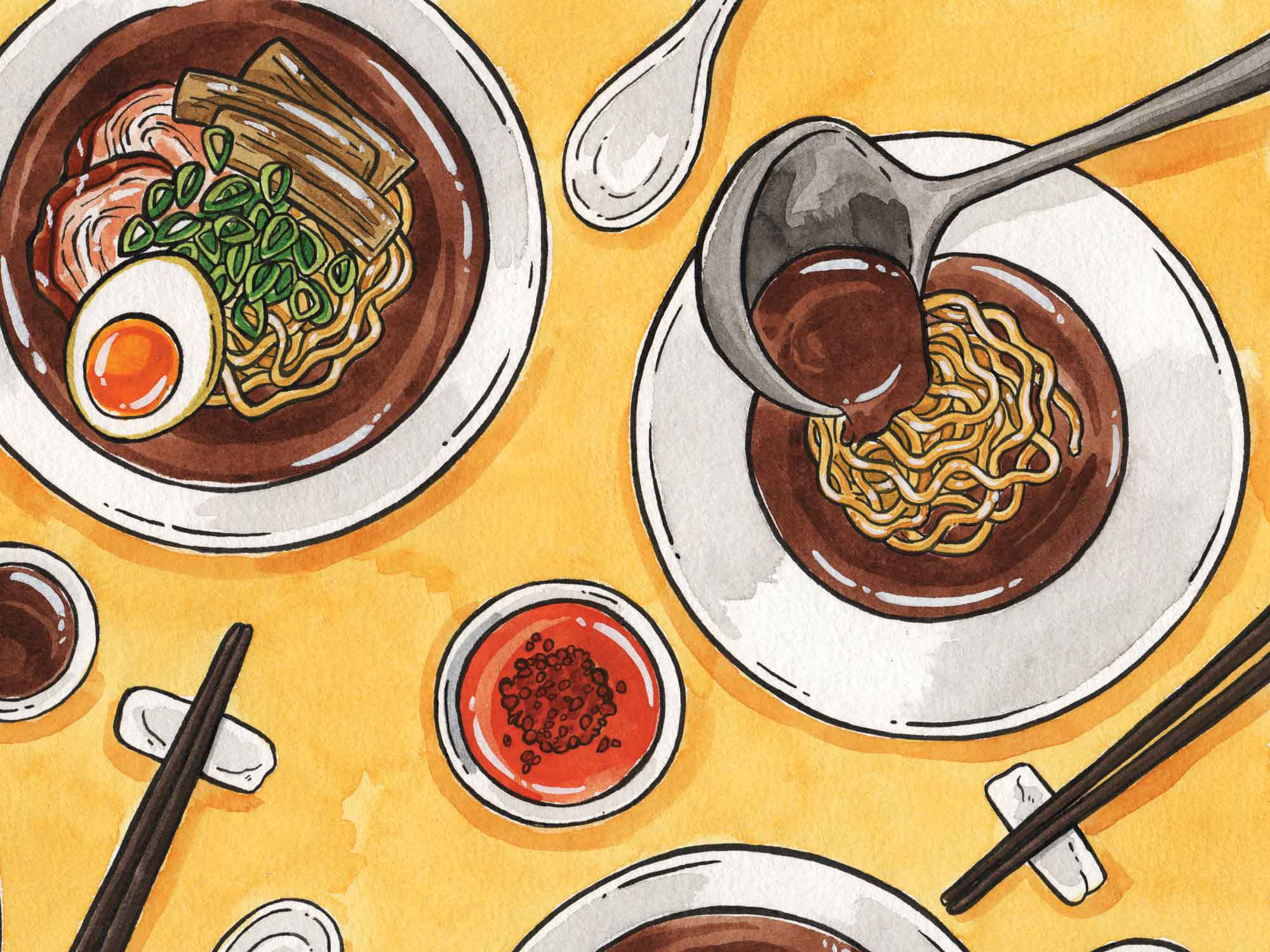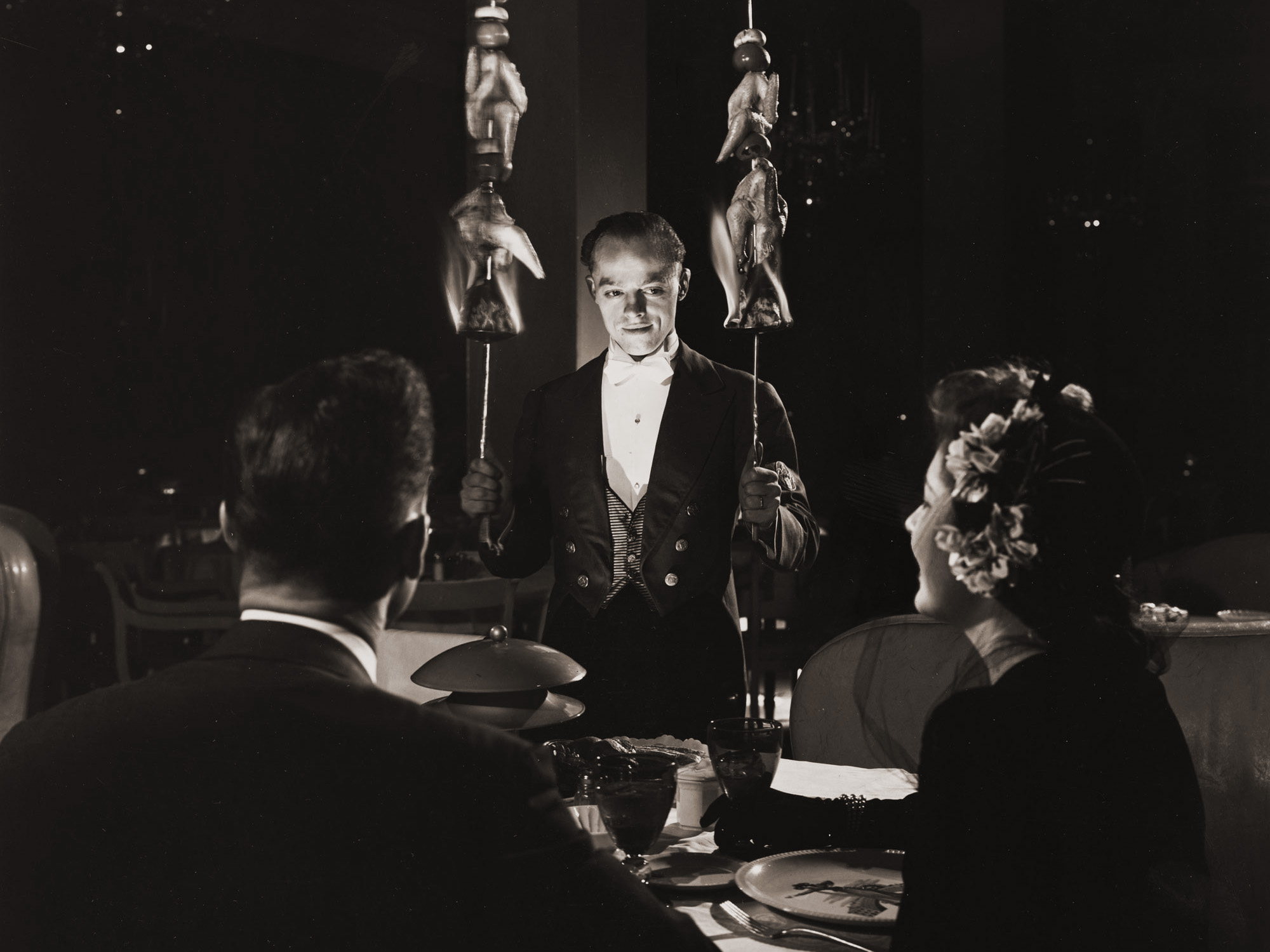BY NOW RESTAURANTS KNOW PERFECTLY well how to design a dish to make it a sensation on Instagram—an over-the-top dessert, flower and candy bars and squiggles and nubbins. Put it out there and they will broadcast it with heart and star emojis and capital letters OMG!!! DYING!!! SO DELICIOUS!!!
Well, they will broadcast that. But I won’t. No, if you want to get me swooning on Instagram, you need this:
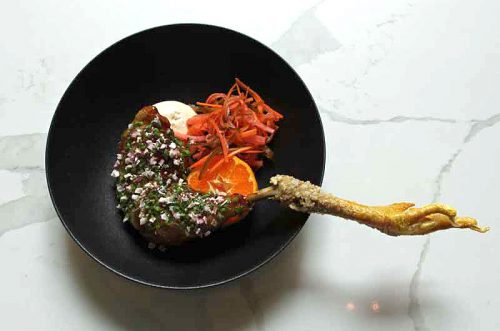
Yes, it’s a chicken leg and thigh… but it doesn’t stop at the joint where chicken legs usually stop, making them a bowling pin shape that doesn’t really bring an actual chicken to mind. No, it keeps on going until you hit the scaly chicken foot, complete with… toenails. There are cultures where food is prized and everyone is familiar with how it gets there—the pig heads sitting in butcher shop cases in Paris, the barbecued ducks hanging in windows in China, hooked by the neck like an umbrella handle.
This is America and we are most definitely not one of those cultures.
Not only that, this is Streeterville, a genteelly character-free neighborhood where such things stay out of sight. And it’s a restaurant in a hotel, not a genre known for out-there presentation. So when my friend Kenny Z. tweeted a picture of this chicken leg, well… you had me at chicken toes.
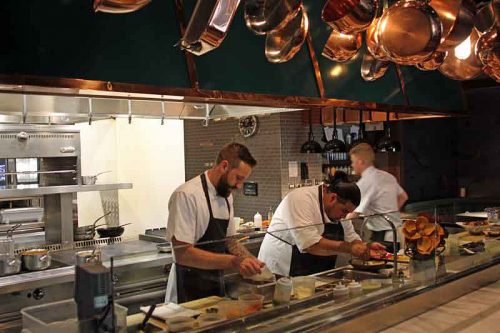
Chef Larry Feldmeier and crew
“WITH ANY OWNER, THEY’RE NERVOUS WHEN a new chef comes in,” Larry Feldmeier, chef of The Albert in the Hotel EMC2 in Streeterville. “He said to me, ‘I don’t want someone with an ego that’s just doing food that he likes.’ I think I’m pretty ego-free. I think we’re trying to find that good balance, making food that me and my cooks are proud of, and people are still excited to try.”
The Hotel EMC2, which opened in mid-2017, is a boutique hotel with an “art and science” theme most readily seen in the elaborate construction over the bar, which suggests a chemist’s kit of beakers and tubes. (The design of the restaurant, by New York-based Rockwell Group, was nominated for a Jean Banchet award that year.) The owner is developer Scott D. Greenberg of ECD Company and SMASHotels, who also developed the Wit hotel in Chicago.
The challenge for a hotel like this is to offer food that’s competitive in a scene like Chicago’s, and that matches the image of the hotel—and at the same time, doesn’t alienate guests who in this case, may not even have known what kind of hotel they were booking. “The hotel’s a Marriott franchise, we use their reservation system so it’s always sold out,” Feldmeier says. “But as far as their input, it’s not much as long as our hours are six to ten every day and we serve three meals a day.”
When I ask if the room service menu is different from what the restaurant serves, he says, “It’s the dinner menu—plus a cheeseburger.” Still, he says, “We definitely get the hotel guest who complains, where’s the pizza and the chicken wings? I think the nice thing about this hotel and the way it’s been designed, is that it appeals to people who are more willing to explore and try new things. They try the restaurant and they’re taken aback—’Oh, it’s not really a hotel restaurant.'”
Still, one thing Feldmeier knew he’d have to offer in a hotel was a chicken dish. And for the person whose tastes don’t go any further than white meat, there’s a very nice upscale chicken breast dish on the menu with Anson Mills grits, a softboiled egg, sauce gribiche and some pickled mustard greens. “They want chicken on there, so for me it’s about finding the best chicken I could. I talked to D’Artagnan [a high end meat supplier], what do you have for specialty chicken. They have these nice heritage chickens, but they’re really expensive, so I have to figure out a way to use all of them. If I can get four portions out of it, plus bones for stocks and sauces, I can afford it, he gets his chicken dish, I get my chicken dish, and everybody’s happy,” Feldmeier says.
For his chicken dish, the dark meat half, Feldmeier got the idea of making a greater visual impact by serving the entire leg, stretching well off the plate. “The owner, that’s the one dish where he was like, I don’t know about this. I said, I think the people that will get it will really get it.”
The chicken leg is aged and confited, then fried for a crispy exterior—”At the end of the day, it’s a fried chicken dish,” he says. The outside is dressed with bits of red onion and chives, and it’s served with a satsuma aioli and half a satsuma orange, for squeezing over it—giving what’s already a pretty comfy dish a hint of another comfort food, orange chicken.

Well, comfy except for the giant chicken foot sticking off the end of it. I ask him, frankly, how has the reaction been—do people send it back to have the unexpected part cut off? “A couple of people have,” he says. “But it’s also gotten us attention. Pictures of it have gotten around. We had a ten year old girl the other night who loved it, and told the server to tell the kitchen how cool she thought it was.”

ONE OF THE THINGS I LIKE ABOUT writing about chefs is that for every person born at third base in the business, there are ten kids who just took the job because it was a job, but seized their chances to learn and steadily rose in their careers—and sensibilities.
For Larry Feldmeier, his first restaurant job was just working at a pizza parlor in his hometown of Mokena in the southwest suburbs: “No real reason, except my friends worked there and I needed a job for the summer. I don’t really have a good story, my parents didn’t cook a lot or anything.”
His next job would be the first step in expanding his culinary horizons: “My dad did heating and air conditioning, so he got me a job with this guy, Gaston, an old French guy who had a little cafe out in the suburbs, Cafe Gaston. Super-classical French stuff. I had no idea what he was yelling at me in French half the time,” Feldmeier says.
From there he went to the southwest suburbs’ best known upscale seafood restaurant, Tin Fish. He credits Tin Fish chef Colin Turner with “showing me more of what was out there, the fine dining that I had never experienced when I was younger. There’s not a lot of serious restaurants out there, but they’re a scratch kitchen, doing fish butchery and all that stuff.”
He particularly liked the food scene in Park City—”Nobody’s from there, they all have money to spend and they like nice things.”
At that point, he wanted to get out in the world, and wound up working around ski towns—Breckinridge, a few stops in Denver, the Goldener Hirsch Inn in Park City. Despite Utah’s “Mormons and no liquor” reputation, he particularly liked the food scene in Park City—”Nobody’s from there, they all have money to spend and they like nice things.” He found it relatively easy to rise there, but by the same token, didn’t always feel challenged—”If you have a good work ethic you can kill it out there. If you’re not a pothead you’ll do okay there. It’s a good lifestyle, but it’s not reality,” he says.
Returning to Chicago around 2010, he knew where he wanted to be—”I loved the idea of working for Alinea, at that point everybody wanted to. I dropped my resume off six times, and never got in.” He staged at other spots around town—Boka, Graham Elliott—and wound up working at Sixteen in the Trump Tower under opening chef Frank Brunacci, who won it a Michelin star in 2010, Michelin’s first year in Chicago.
Typically, a cook at this point changes jobs a lot, to gain different kinds of experience. Instead, “Sixteen kept bringing me new chefs,” Brunacci, then his #2 Joseph Rose who filled in while they searched for a replacement, and then the Joel Robuchon veteran who would win the restaurant its second Michelin star, Thomas Lents. I ask him to talk about the different things he learned.
“Working for Frank Brunacci—it was one of the first restaurants that really taught me strict discipline and fine dining and one person has three dishes and they’re really focused on those things,” Feldmeier says. “Lents put me to the test, he’s a tough guy to work for but worth it if you can make it. Getting yelled at every day for not cutting the shallots right. Or one time I was making a huge pot of pommes puree for a banquet, and I asked for help, and he just said, don’t be a little bitch.”
So that was Feldmeier’s French brigade kitchen education, one step removed from Robuchon himself, and you can see it now in the layers of flavors in his dishes. He summarizes what it taught him: “Strict technique, strict organization. Classic French sauce work is one of my favorite things to do, that helps with any dish. If I could go back and do it over I’d probably just be a saucier somewhere, working in the corner.”
Gallery: Dishes at The Albert
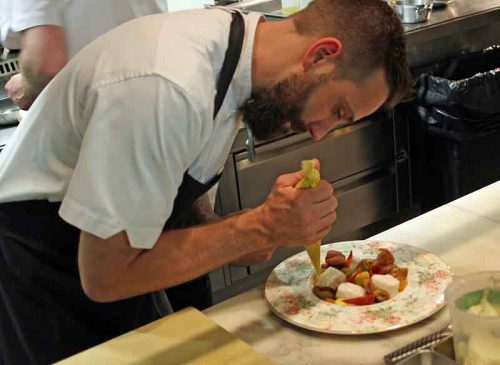
THE GALLIC DEMANDINGNESS OF SIXTEEN also, just maybe, encouraged him to seek out a position with fewer demands and more creative opportunities—which turned out to be Whirlpool/Kitchenaid’s corporate kitchen downtown, which had lured a few people away from Sixteen. “It’s kind of a dream job—three course lunches and five course dinners, nobody pays for anything, no food costs, no labor costs, just do whatever you want to do. We brewed beer at one point, I was doing chocolate work. It’s fun for a couple of years—I got lucky just because of the guys who were there.”
But he didn’t want to disappear into corporate life. And so when Lents offered him a sous chef position at Sixteen, he went back, and once again got a new chef when Lents moved to Detroit and his #2, Nick Dostal, replaced him, which moved Feldmeier up to executive sous. If Lents taught him French cooking, Dostal brought him an Asian influence he’s continued to pursue—”He used a lot of herbs, kombu stocks and things like that, and that sunk in with me. It’s just a lighter way to sauce something.”
As it became clear that Sixteen was heading toward a lower-priced reconcepting, he started looking around for his next gig. A recruiter contacted him after reading about him in an article at Zagat, and he did a tasting last summer for The Albert, which had opened the year before but gotten middling notices. His last day at the Trump Hotel was the day they did the tasting for the new concept, Terrace at 16.
Now, with another Sixteen vet, pastry chef Allison Schroeder, who had most recently been at Bellemore, he runs a small, busy kitchen cooking up breakfast, lunch and dinner, in-room dining and banquets for the hotel’s two 50-seat spaces. In between all that, they grow herbs in a rooftop garden, and they make stracciatella cheese in house, and charcuterie like pancetta, while Schroeder spends the evenings on the hotel’s baking program.
At night, he goes home to the south suburbs, where he lives with his wife and two young children and, he says, eats a lot of Portillo’s hot dogs. “The older one is super picky, he eats Portillo’s hot dogs every day. The baby, we’re growing greens in back and he munches on all of them, my lady hates it,” he laughs. He spoke at one point about someday returning to Park City or thereabouts, or going to France to cook at Le 1947, the only Michelin three star in a mountain town. But life seems pretty good right now, too.
Settled in after a year, he’s looking at it for the long haul—”You see it a lot in restaurants where people just come somewhere for six months and then move on. The owner’s been great to me, the more I’m here the more comfortable he is with me, and I want to stick it out.” They’re working on building local traffic from people who live in Streeterville, and he’s trying to get more customers interested in the tasting menu, which is five (really eight or nine, with some things thrown in) courses for $85—more modest than the epic productions he helped produce at Sixteen. “I love doing tasting menus, I love being able to tell people, here’s what you get,” he says.
I ask him if being in charge, while also being part of a larger organization, has been an easy transition. “I had a good chunk of doing numbers at Trump, but it was still a bit of a shock,” Feldmeier says. “I think they know that it’s a little bit of a struggle doing the paperwork, for chefs. I do it, but I can’t sit in an office for very long. After about an hour I need to be in a kitchen. Making the food’s the best part—I need to be on the line.”
Michael Gebert might have been Albert IV in his family. Instead he’s the editor of Fooditor.
Latest
Join the Discussion
After you comment, click Post. If you're not already logged in you will be asked to log in or register with Disqus.
















